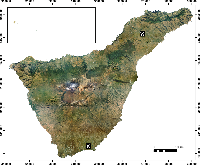The 1909 Chinyero eruption on Tenerife (Canary Islands): insights from historical accounts, and tephrostratigraphic and geochemical data
Di Roberto A., A. Bertagnini, P. Del Carlo, S. Meletlidis, M. Pompilio
Bulletin of Volcanology, DOI: 10.1007/s00445-016-1083-7
Abstract
The last eruption on Tenerife (Canary Islands, Spain) started on 18 November 1909 from the El Chinyero vent on the northwestern Santiago rift. This fissural eruption was well documented by scientists and eyewitnesses, but there is a lack of data on the high-energy phase that produced the most significant emissions of ash and lapilli at the onset of the eruption. Here, we review historical documents (e.g. newspapers, dispatches, telegrams); eyewitness accounts and scientific reports were reviewed from a volcanological perspective and integrated with data from the analysis of deposit features, allowing an accurate reconstruction of the eruption and its dynamics. The 1909 eruption of Chinyero was fed by a compositionally discrete magma batch that ascended rapidly within the crust, producing rather violent pulsating Strombolian explosive activity in the early phases of the eruption. This activity produced a ca. 80 m high scoria cone and heavy fallout of lapilli and ash over the entire northern sector of the island of Tenerife. The energy of explosive activity waned after 3 days, giving way to the weak Strombolian explosive activity that contributed to a lesser extent to the buildup of the pyroclastic pile. Eruptions such as those from the Chinyero vent in 1909 are representative of rift activity on Tenerife and constitute a volcanic hazard for present-day inhabitants.


